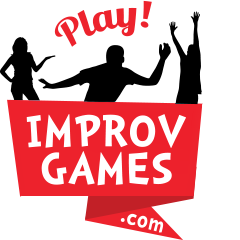Quick Description

Players get into pairs and find 3 things they have in common. Repeat for 3 things in common on a deeper level.
In this game a “thing” can be a shared hobby, a life circumstance, shared history or belief. In other words, almost anything.
How to Play
Have the group get into pairs.
Ask them to find 3 things they have in common with the other person.
After a few minutes ask them to form a big circle and ask if anyone would like to share the discoveries they found.
Note: When a person in the group that share something they found in common with their partner ask if it’s also true for anyone else. “If that is true for you too, raise your hands and say ‘me too’!” And keep this going throughout the activity. It’s a great way to build connections (and trust).
Round 2:
Ask them to find another 3 things they have in common – and this time ask them to go deeper than the first.
They may ask you what you mean by that, I will often say, “I don’t have any information about that – just deeper.” And sometimes I will say just give it a try and you’ll figure it out.
After a few minutes ask them to form a big circle and ask if anyone would like to share the discoveries they foud.
Round 3:
This round is a silent round. Sometimes I tell them to find 3 things in common without using language or mouthing words. I mean, I convey to them with my actions to find 3 things in common without using spoken words, written words or any other way than through body language.
They may look confused, but encourage them no-verbally and they’ll jump at the task.
After a few minutes ask them to form a circle – again non-verbally – and share the discoveries they’ve found.
Sometimes I do speak but often I do this non verbally. And they have to share non-verbally. It’s wildly fun.
Variations
There are many variations for this activity, depending on how you want to use it.
- You can switch partners.
- You can also play it as many times as you want
- You can focus the 3 things in common to be about work, leadership overcoming set backs (resilience) or about anything
- In the first round, you can ask them to find 3 things in common that are not currently visible. Some people like this and others like to start with the obvious.
Notes
I often use the activity at the beginning of a workshop to get people used to standing and talking to each other and talking about real things. Being connected on stage is a high value for improvisers.
The comments that come after the non-verbal round often point out the value of non-verbal communication.
Debriefing this activity can be very rich about the nature of verbal and non-verbal communication or the vulnerability of sharing things bout yourself.
Origins
II learned this from my friend Rebecca Stockely. A wonderful teacher and improviser. [BATS Improv]
Get The Playbook so you have hundreds of games in your pocket when you need them.
